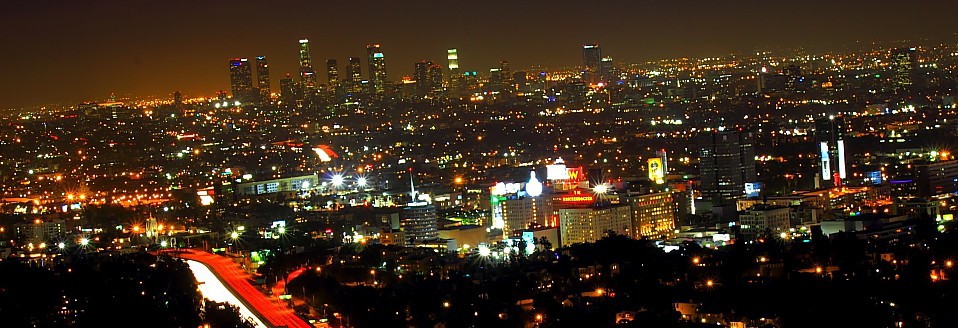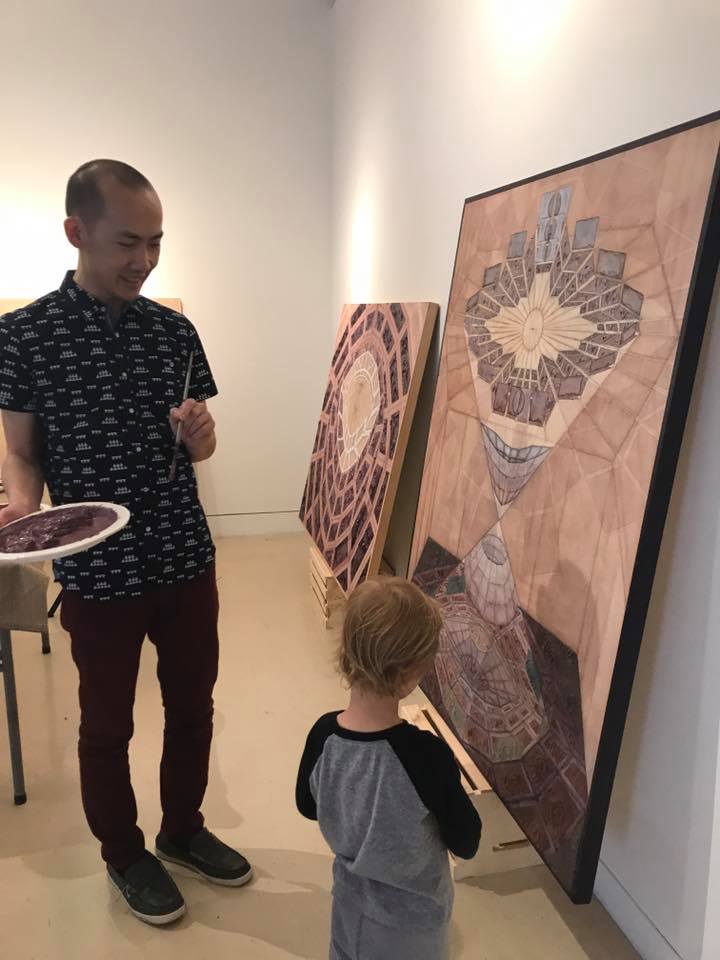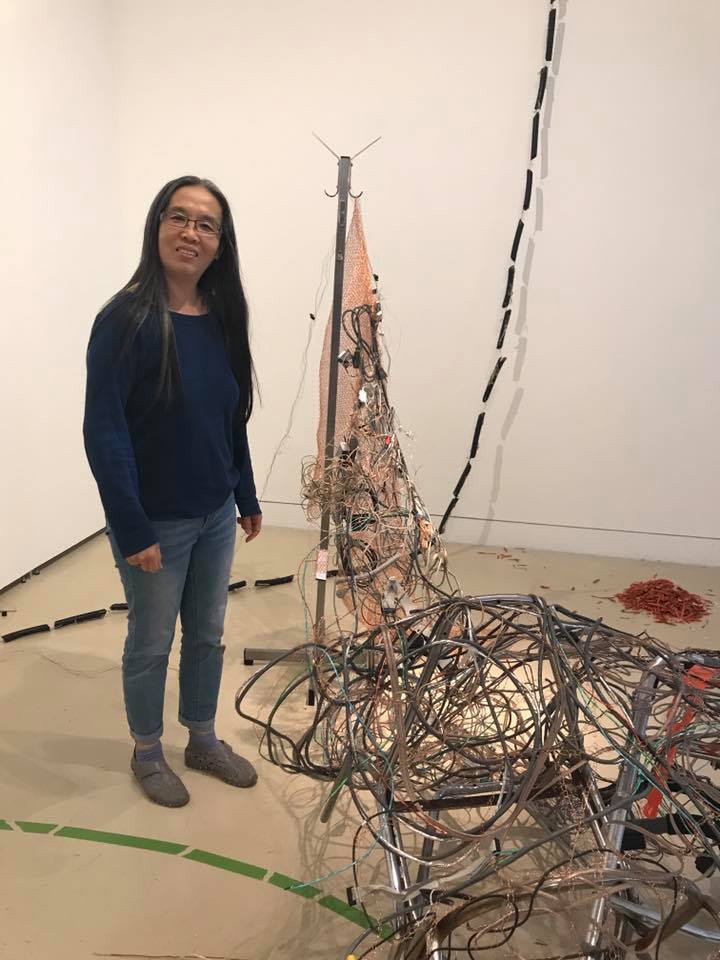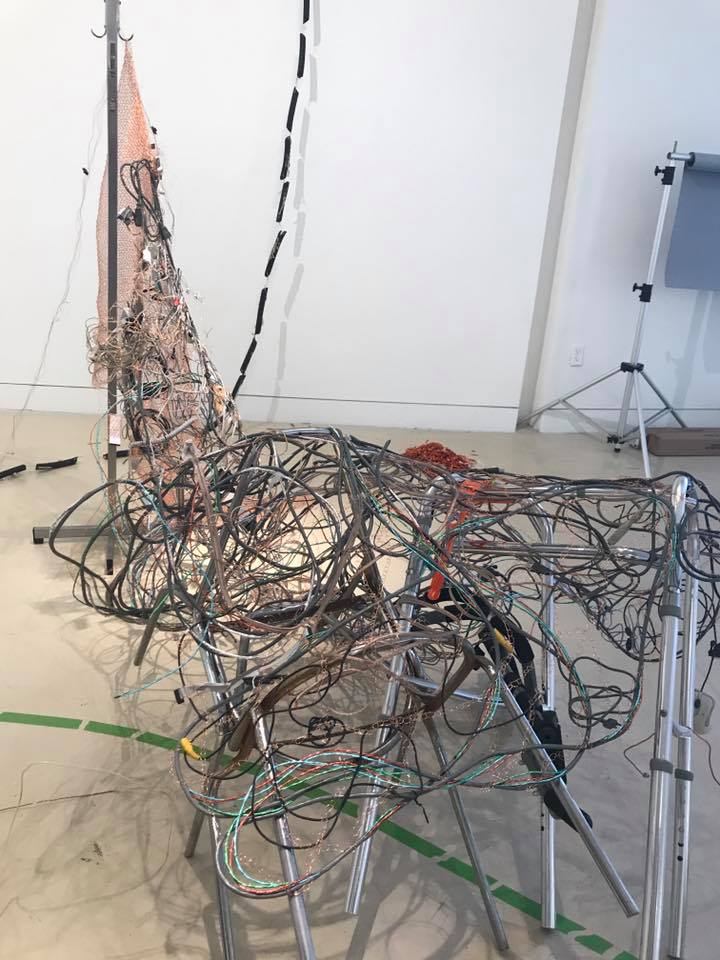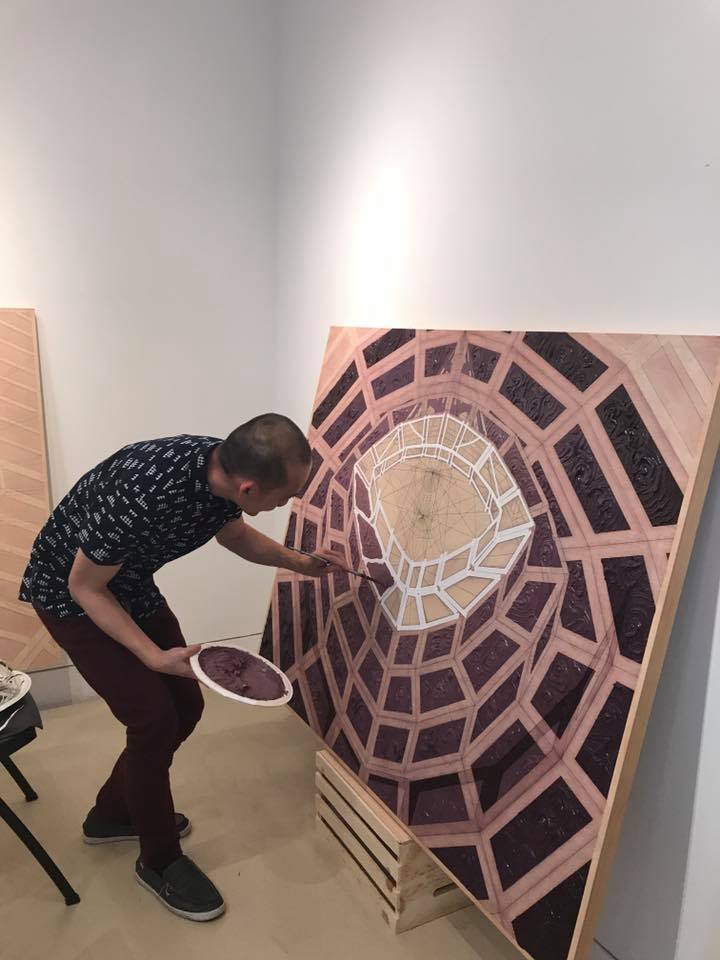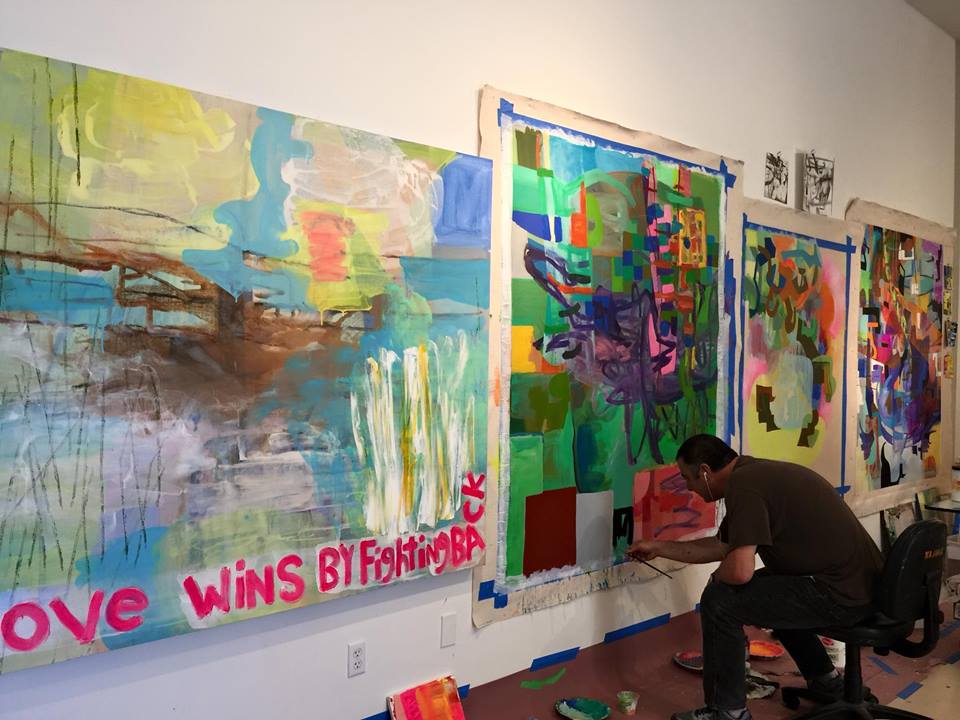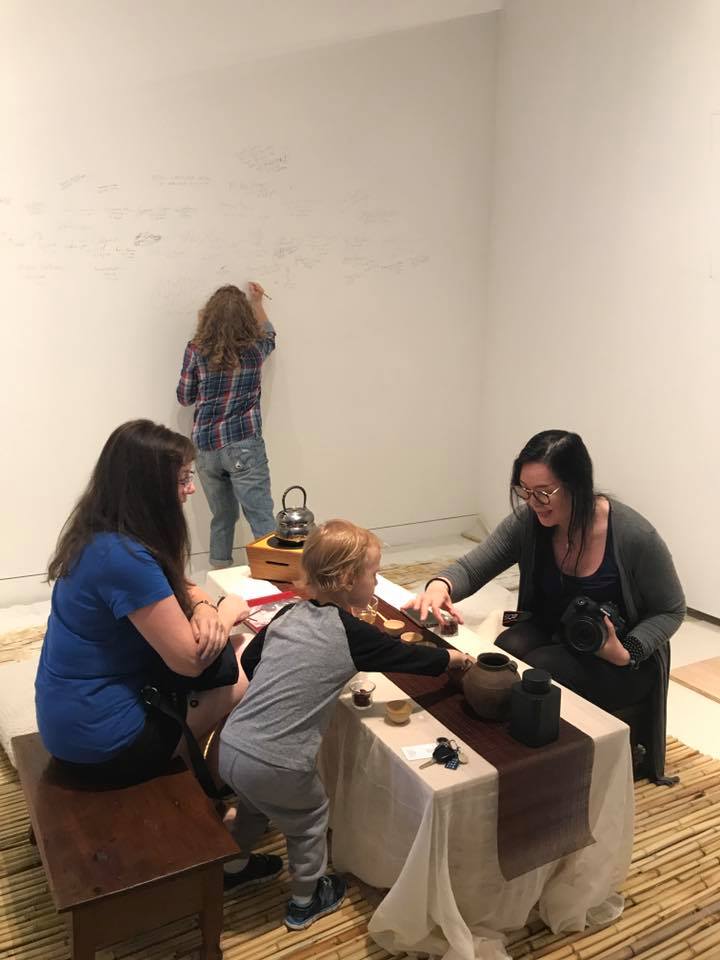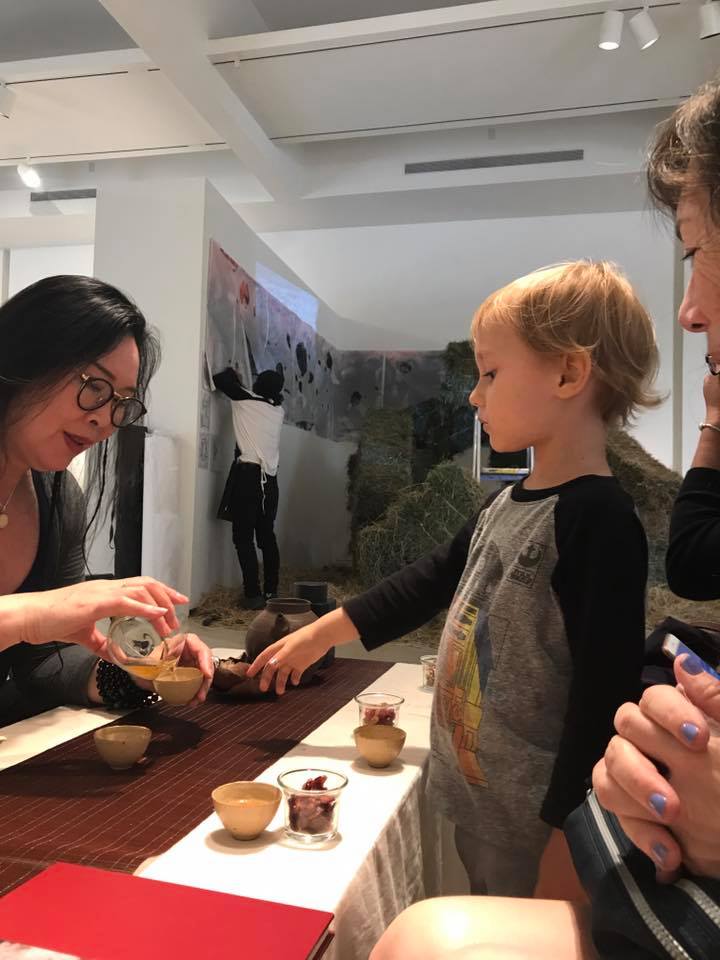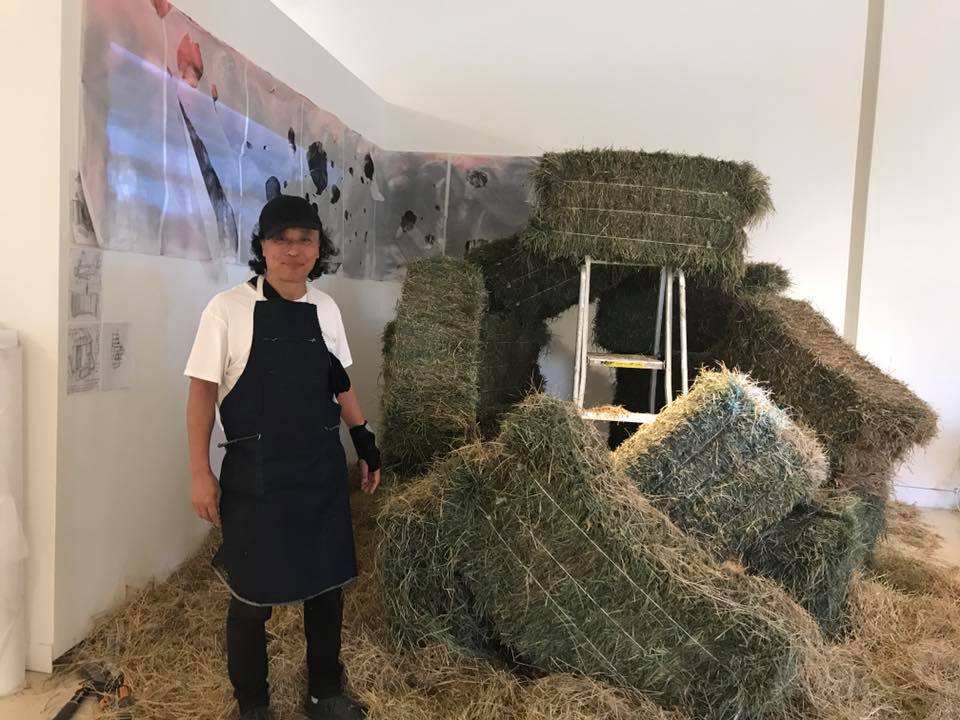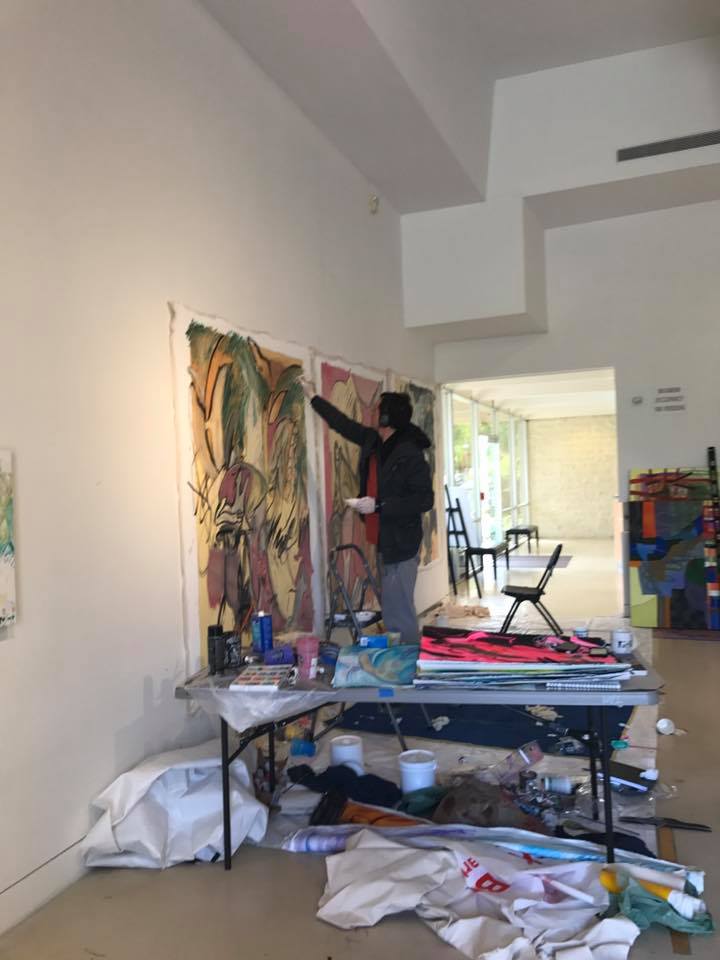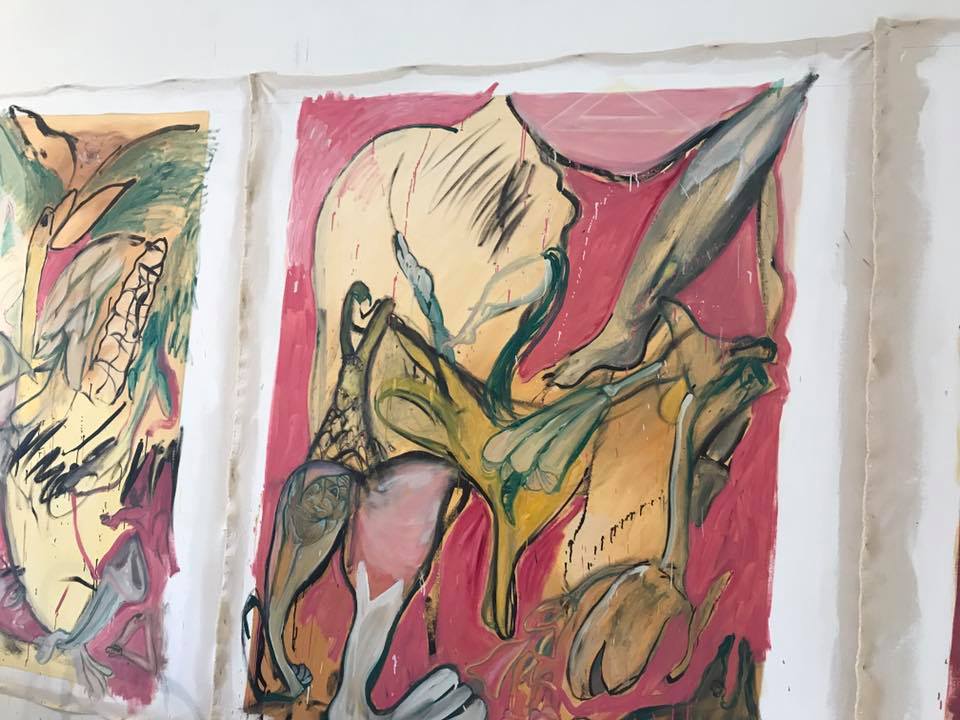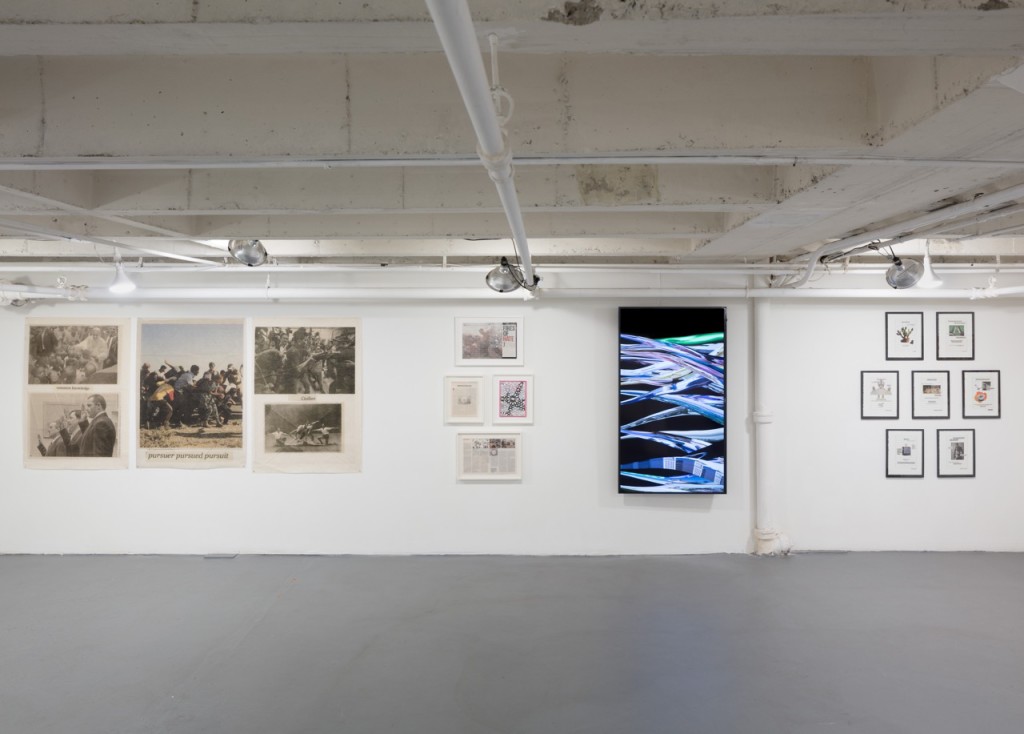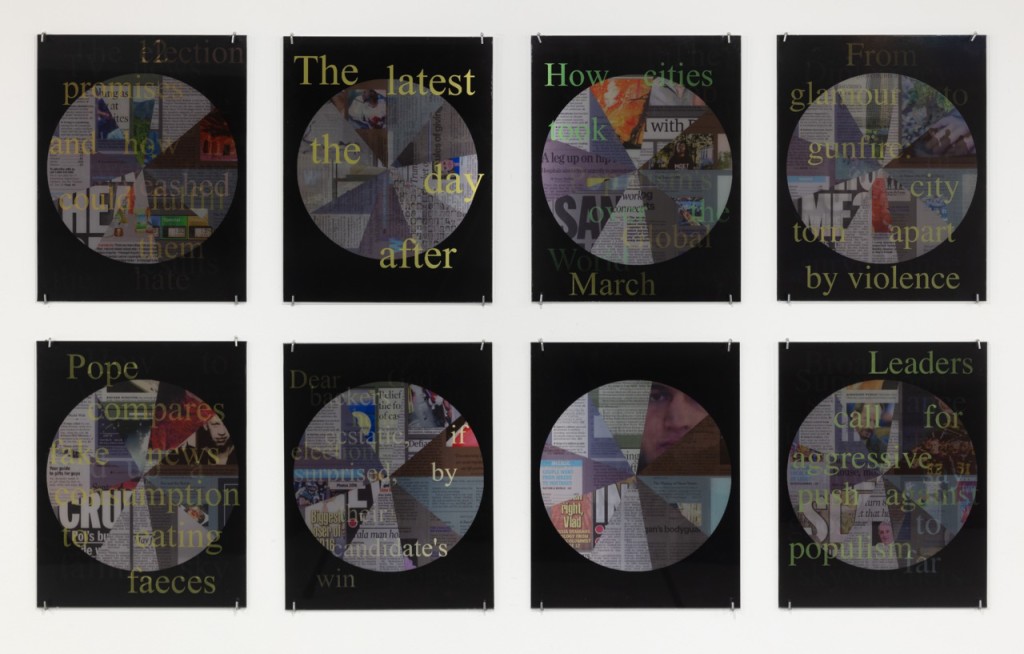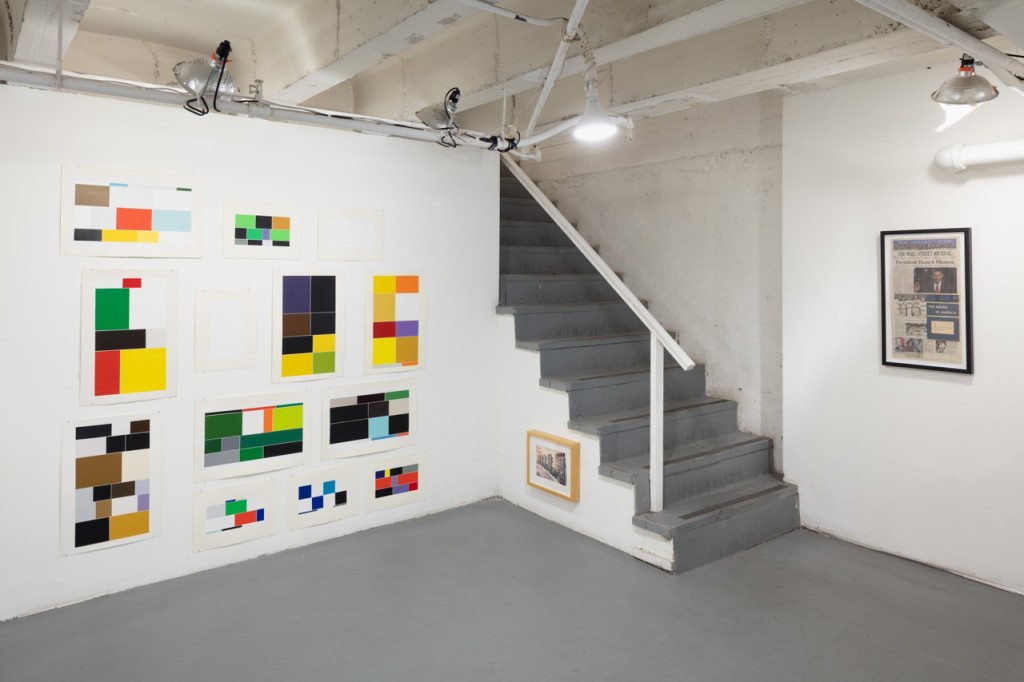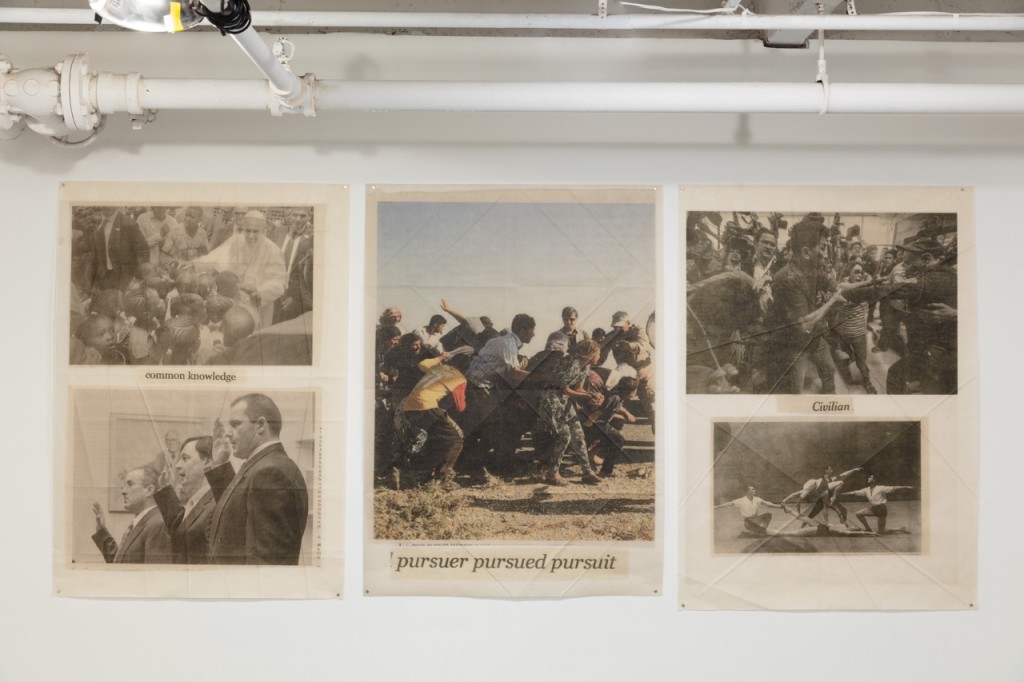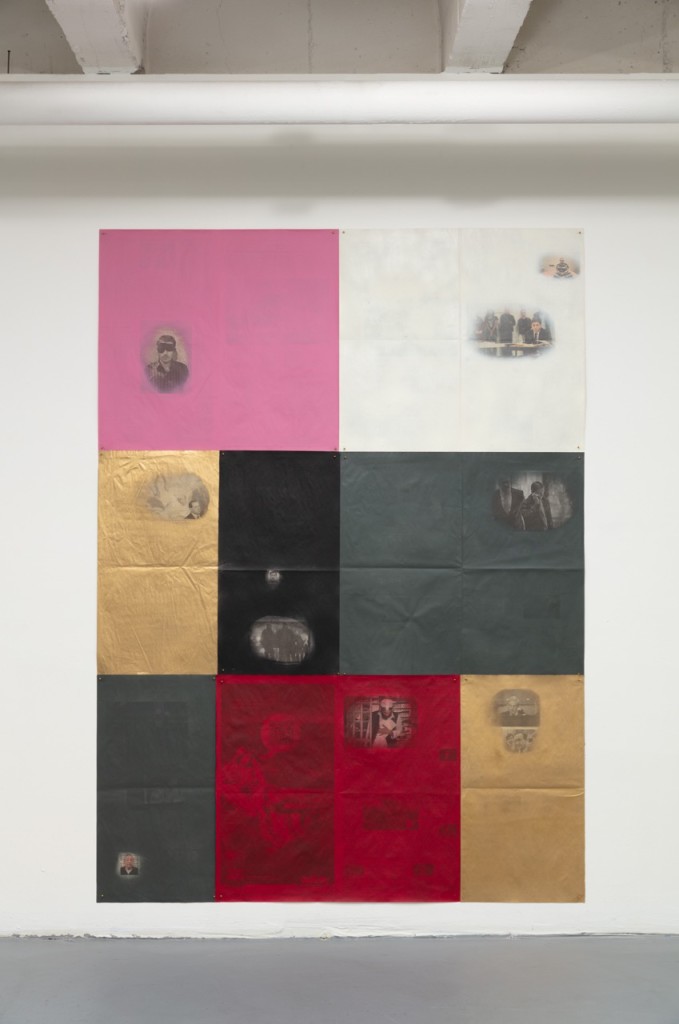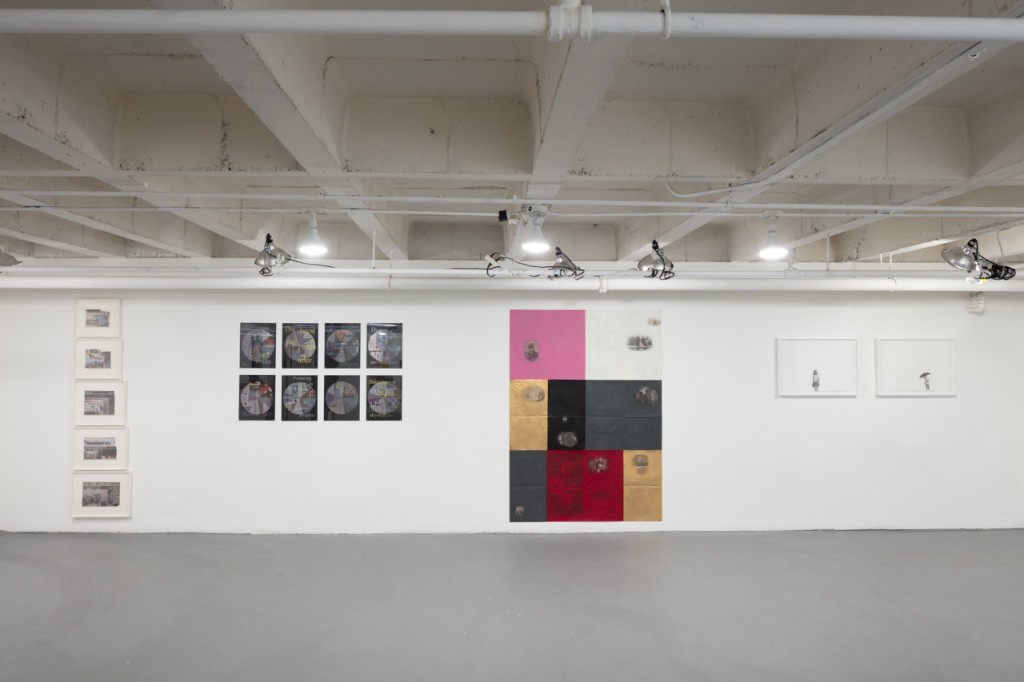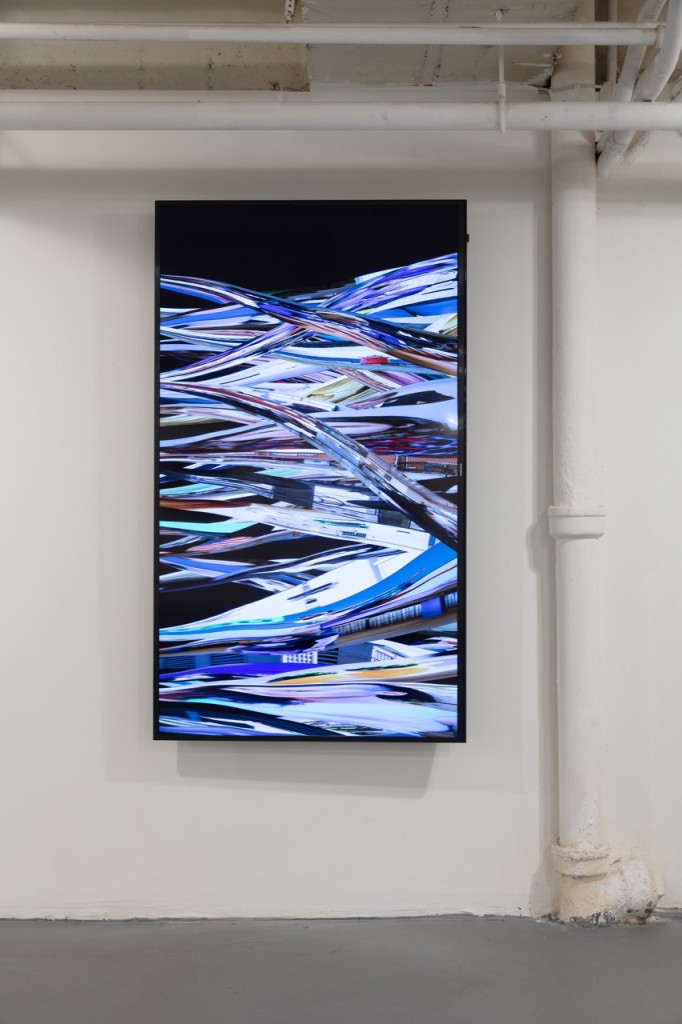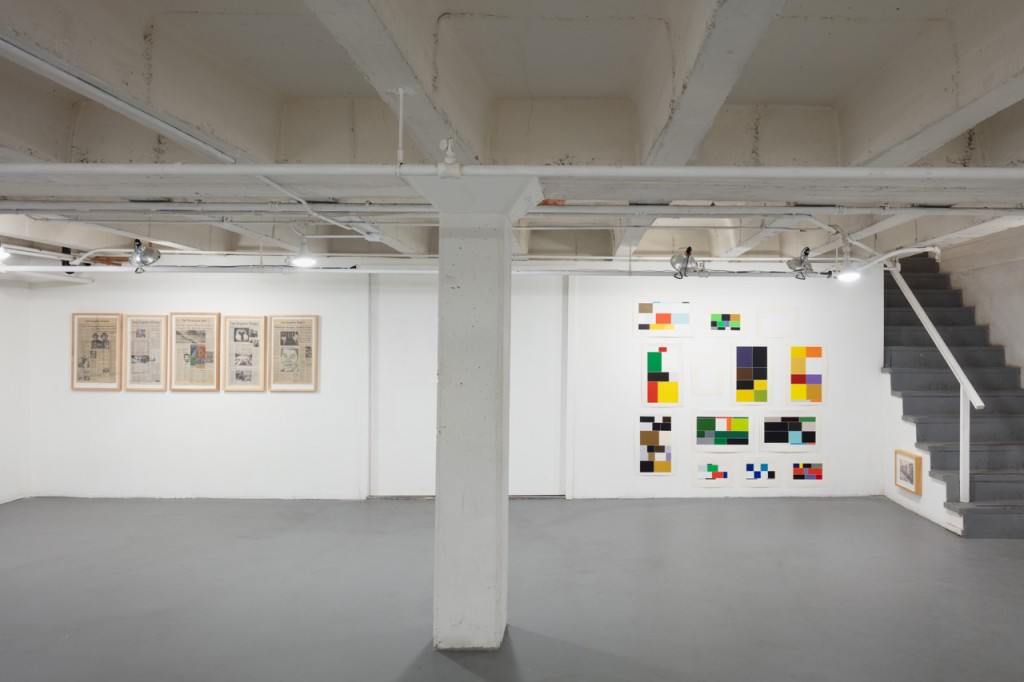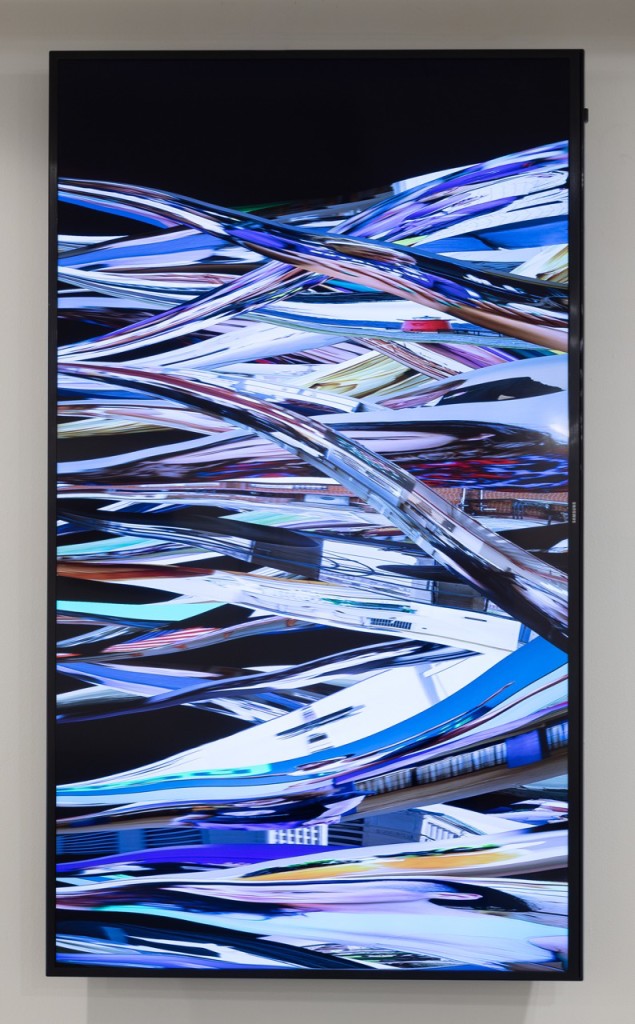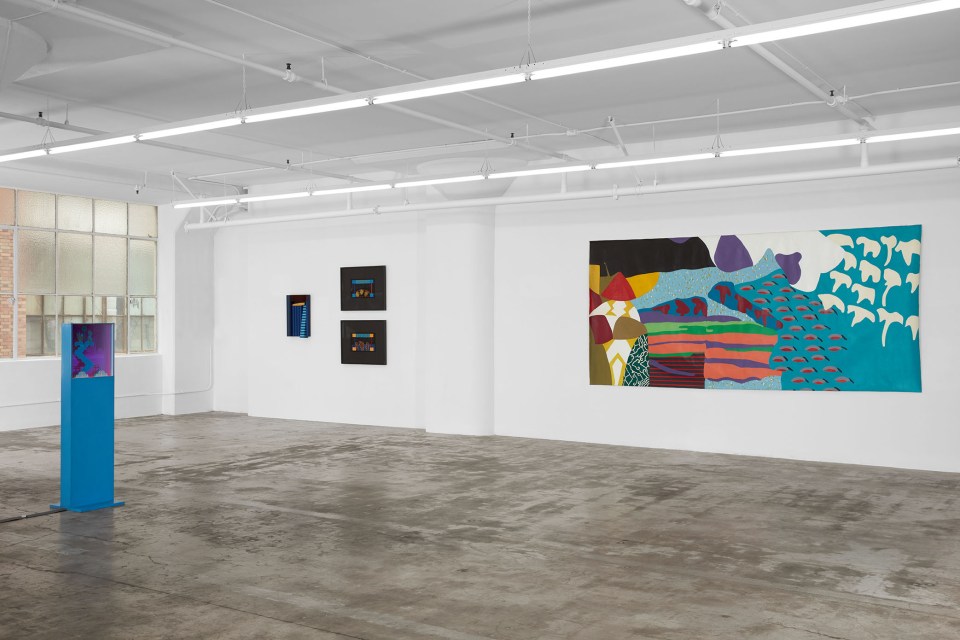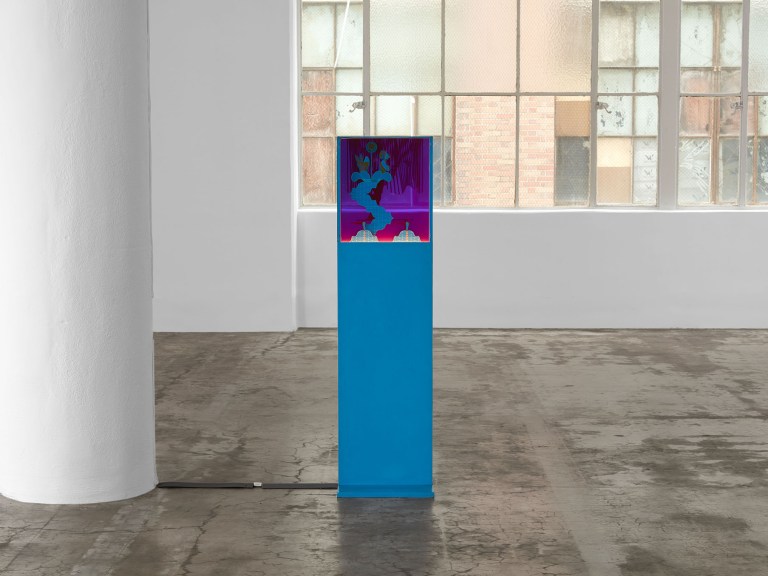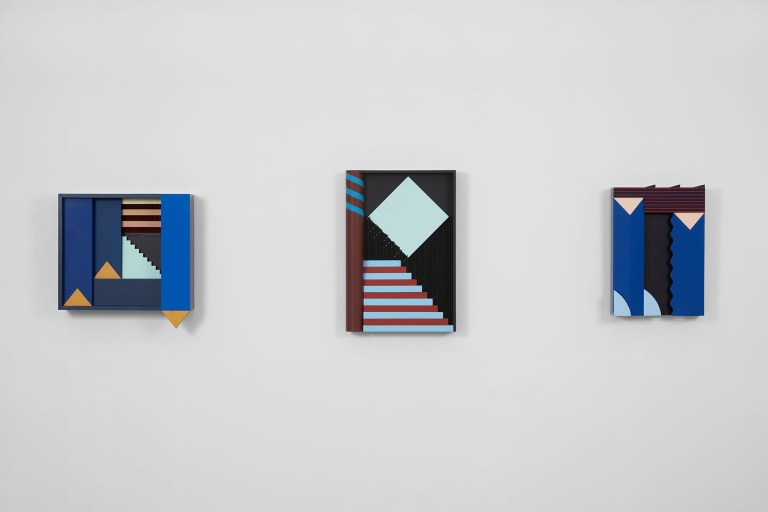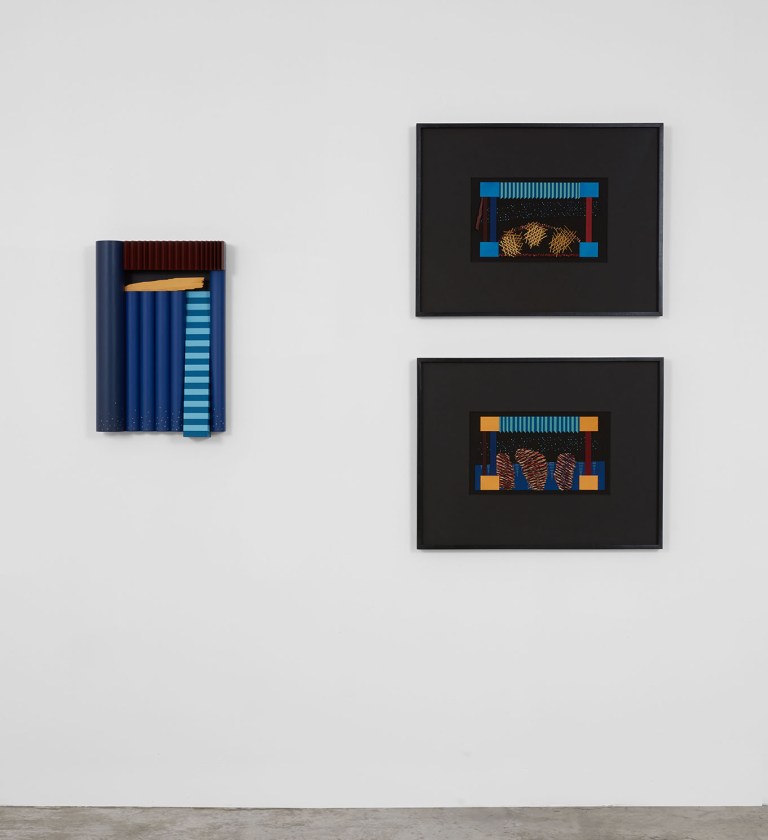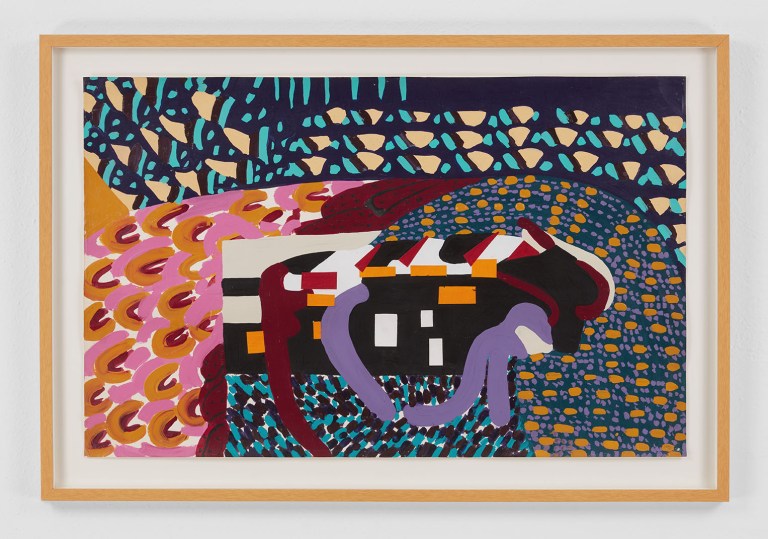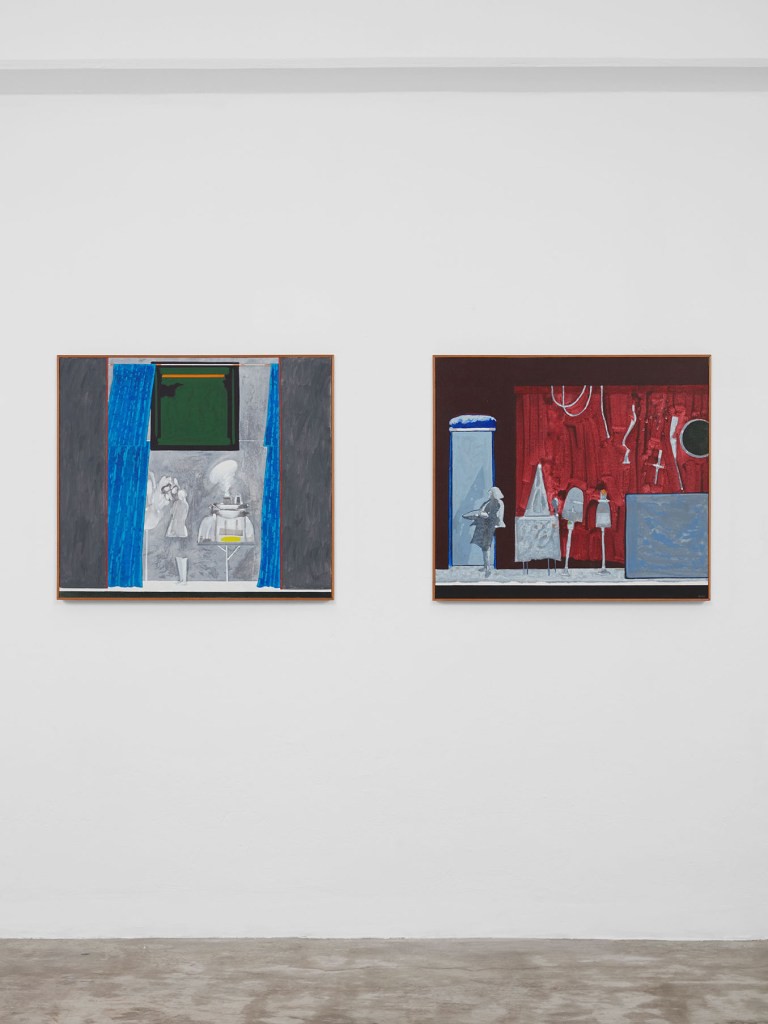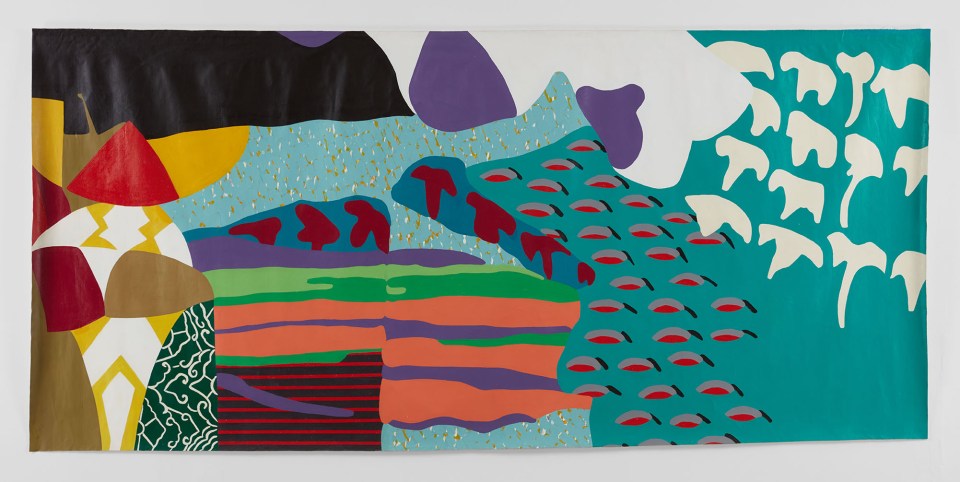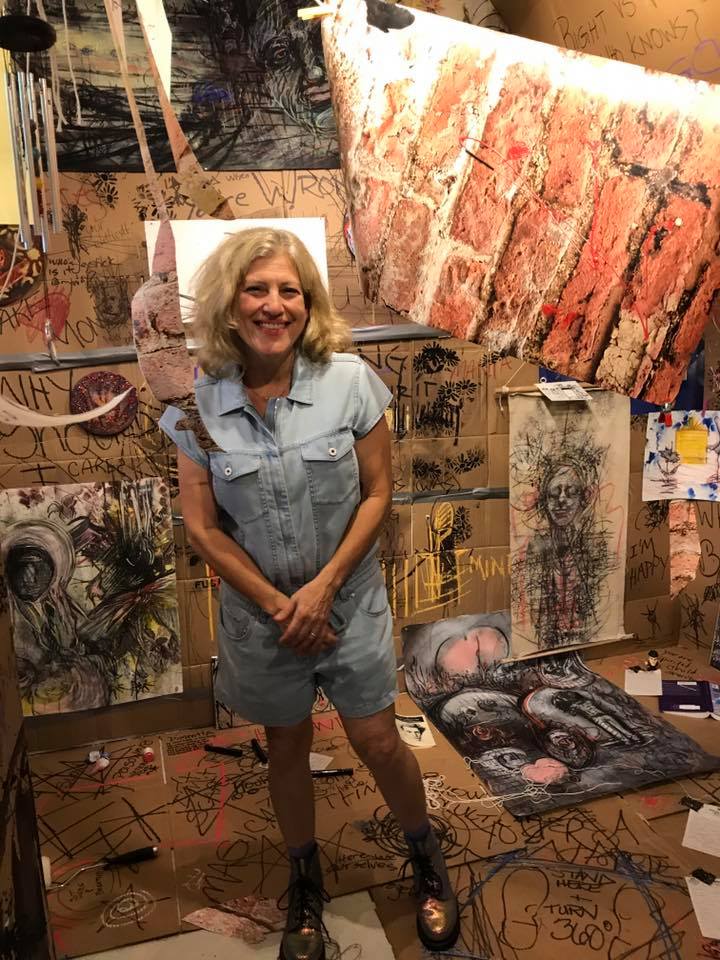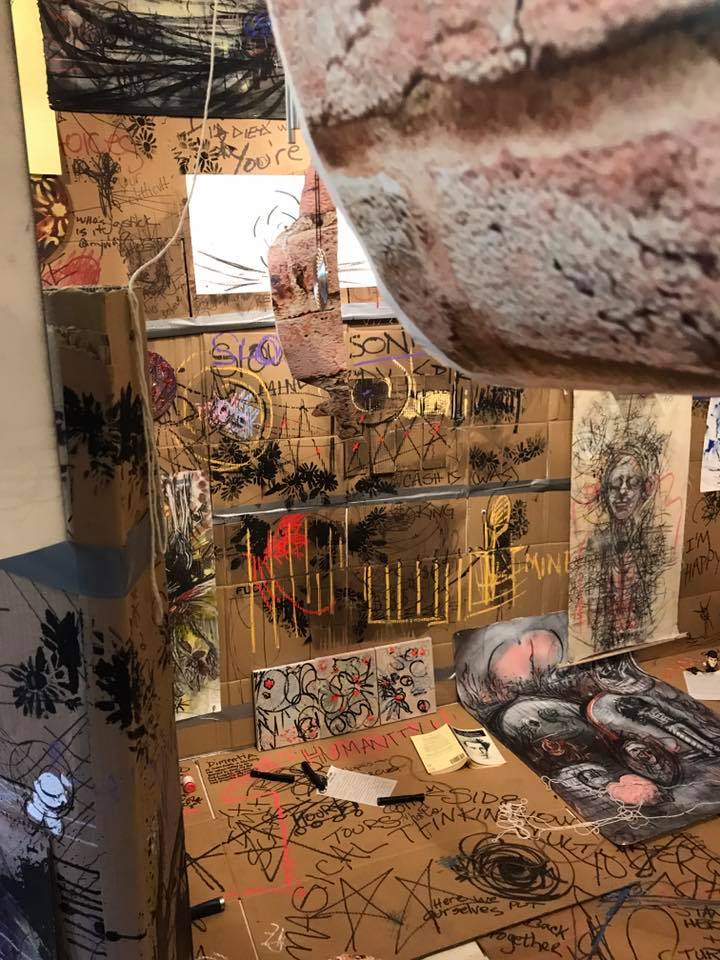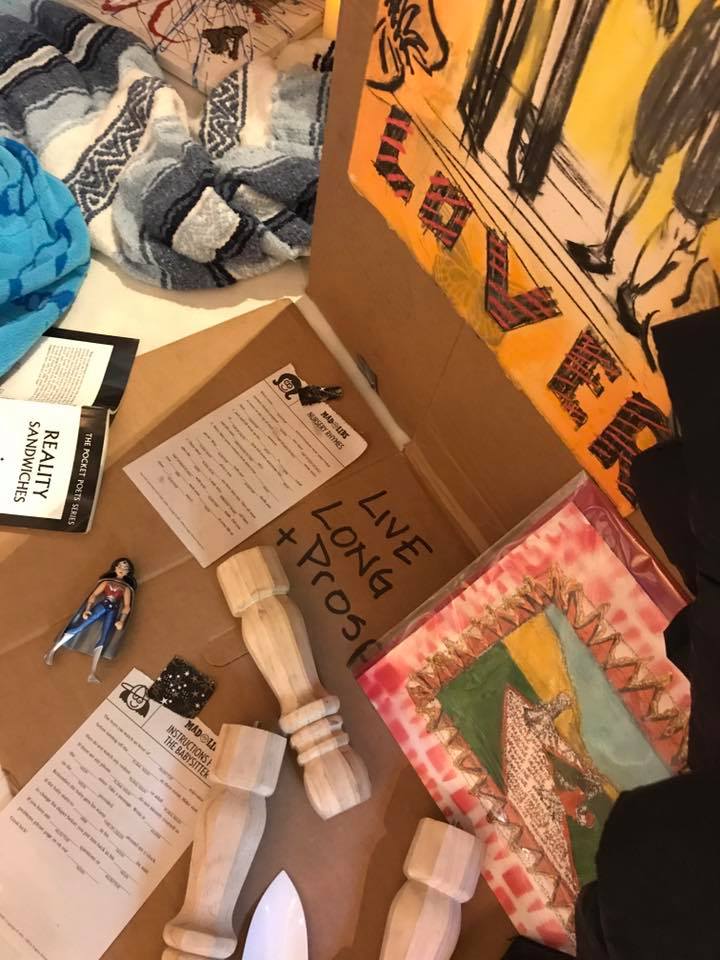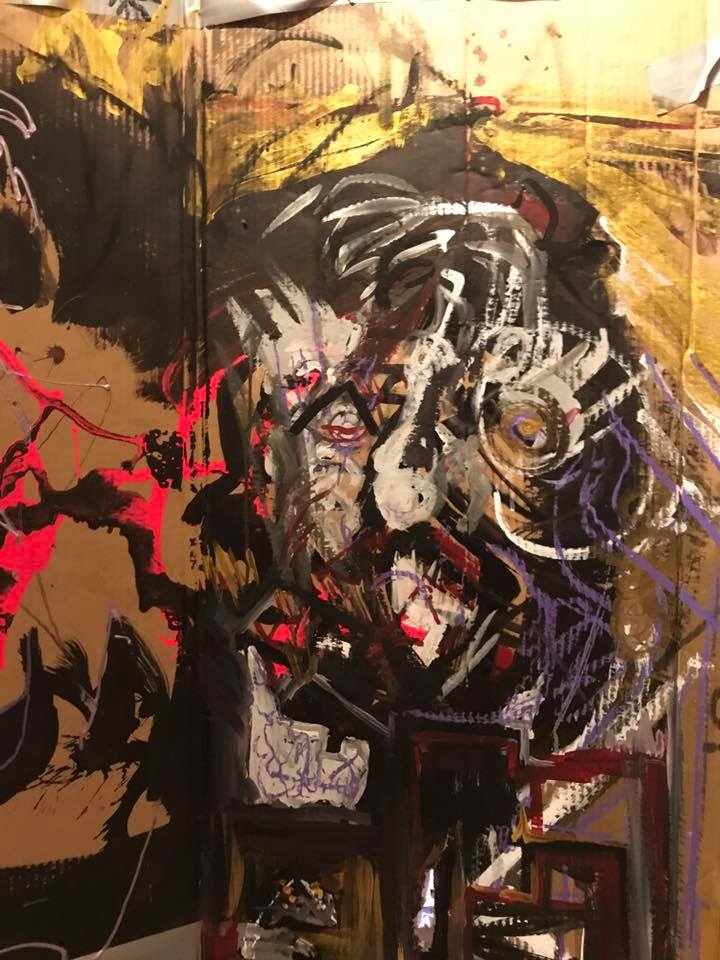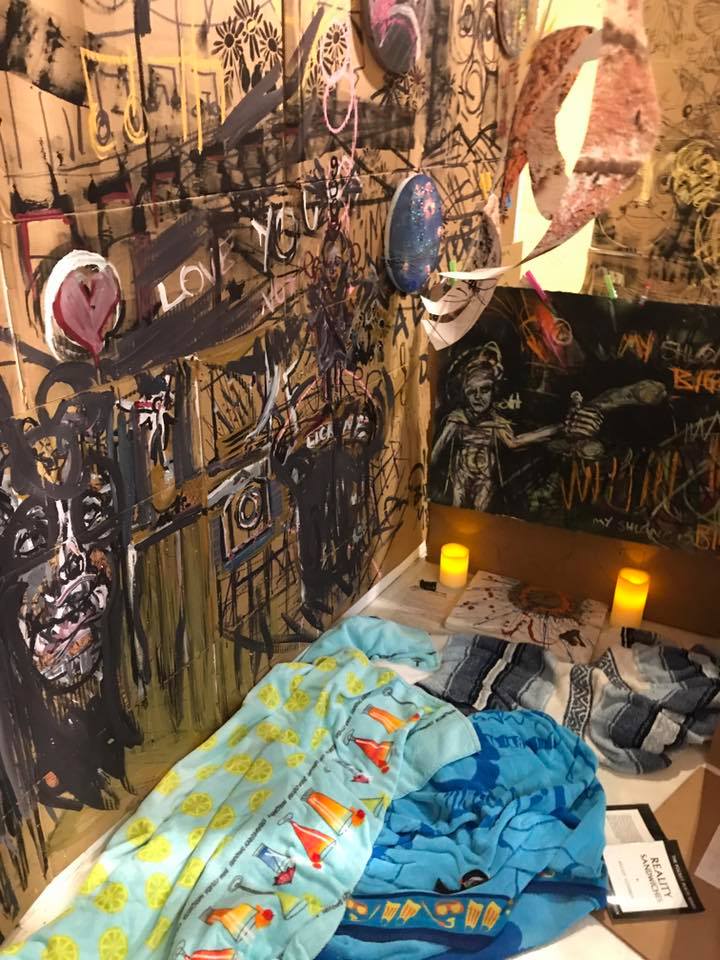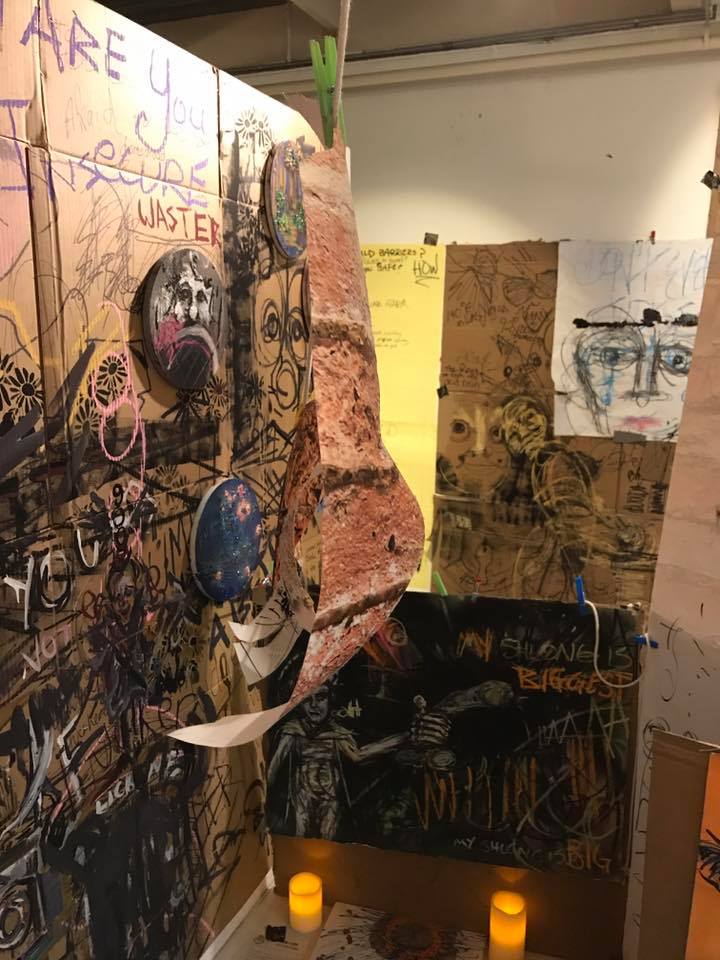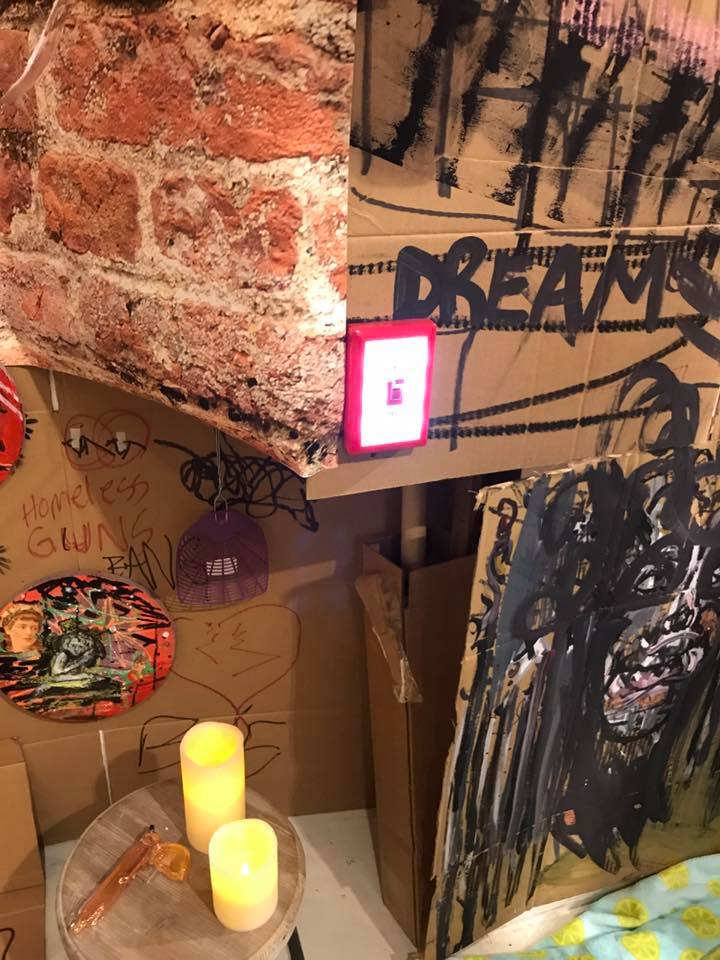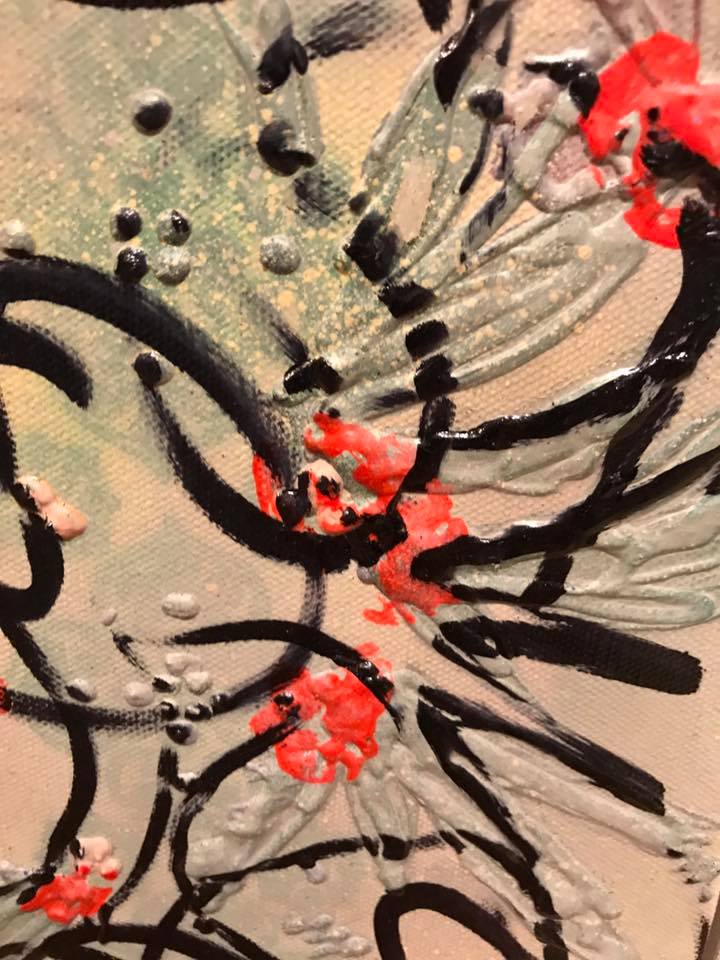Making art is magic.
There is no other way to describe what viewers have been privy to see this past month at the Torrance Art Museum. I’ve visited twice during the process of artists working at their month-long, in-house residencies, and both times the experience was incredibly special, profoundly illuminating, and offered a look at what it means to have an artistic muse.
At the closing tomorrow night from 6 to 9, we’ll have a chance to see the finished products, but as with life itself, it was the journey to get here that was so profound.
Perhaps the real expression is soul-satisfying. Museum curator and director Max Presneill allowed artists space and freedom to work their own individual magic, to bond with and be inspired by each other, and to share their artistic alchemy with each other. And in so doing, he created the ability for visitors to not just interact with the artists but to get in touch with something indefinably special, to be an audience to the manifestation of beauty.
It’s a bit like being present for the creation of the universe.
Okay, on a slightly smaller scale.
Resident artists include: Jodi Bonassi, Chenhung Chen, Tom Dunn,
Huo You Feng, Anna Garner, Lawrence Gipe, Debby and Larry Kline, Feng Ling, Hagop Najarian, Khang Nguyen,
Samuelle Richardson, and Tyler Waxman.
 Bonassi weaves complex, delicate and precisely realized realistic paintings and drawings that capture an indelible image of people, often surrounded by small magical beings, or animals. From her lush color palette to her intuitive emotional resonance, its a treat to see the artist slip in and out of the worlds she’s created.
Bonassi weaves complex, delicate and precisely realized realistic paintings and drawings that capture an indelible image of people, often surrounded by small magical beings, or animals. From her lush color palette to her intuitive emotional resonance, its a treat to see the artist slip in and out of the worlds she’s created.
Chen creates beautiful, flowing sculptures of cords and woven metal and other found objects. Her use of detritus to shape enigmatic, motion-filled sculpture is rather amazing; she weaves her sculptural works from seemingly nothing into something graceful and mythical.
Khang Nguyen’s sacred geometric art is hypnotic, drawn in pencil and painted in acrylic.
Each piece is like the frame of a kaleidoscope image, dancing with light and shape, as if caught just in a brief and fragile moment before a shift. His works, in a muted, earthen palette, bloom as if flowers were plunging up through the soil.
Hagop Najarian is inspired by music – and uses its rhythms and sounds to create vividly colored works that reflect that inspiration. His multi-layered works have the consistency – or rather the illusion – of stained glass.
Feng Ling, also known as Carmen Zou, has created a lovely, Zen-like tea room, offering visitors tea and small snacks of raisins and nuts, and engaging them in conversation. For my grandson, present on both visits to the space, this was an introduction to a beautiful ritual, and allowed him the calm to interact with it and share through it. Older participants wrote their names on the wall behind Zou, and spilled tea on a scroll, upon which the artist will be symbolizing each participant.
Also highly participatory and involving, Huo You Feng, a guest artist from China – where he is working on lithographic projects – has created a movable, mutable large scale sculpture reminiscent of both the Stone Henge and abstract art. The installation consists in part of mega-sized hay bales which Feng has shaped into a space the resembles a temple of sorts. Scattered soft hay forms the base from which these bales rise.
Viewers can touch and walk through, and in the case of my accompanying 3-year-old visitor, help to reshape the work while in progress.
Samuelle Richardson builds sculptures from fabric and wood, creating beings that seem almost alive, and very much on the same page with the “woke” by love Skin Horse character. Her distinct, shabby-chic works are ready to take flight here, in what she describes as a flock of “angry birds.”
Her work is entirely fresh, and upends the concept of sewn, material based exhibitions as being “less than” and women’s work. These are powerful creations.
Tom Dunn has created large scale works that are mural-like in size and scope for this exhibition. The paintings are abstract but oddly recognizable; the pieces shimmer and shiver as if waiting to pop off the walls and dance.
And don’t miss the potent political and social messages inherent in Debbie and Larry Kline’s series work here. They bring a sense of humor and humanity to their interactive mission.
Gipe, Garner, and Waxman all have equally beautiful works.
Whether you’ve followed them all in their process or this will be the first time viewing – don’t miss the closing on Saturday from 6-9 p.m.
TAM is located at 3320 Civic Center Drive in Torrance.
